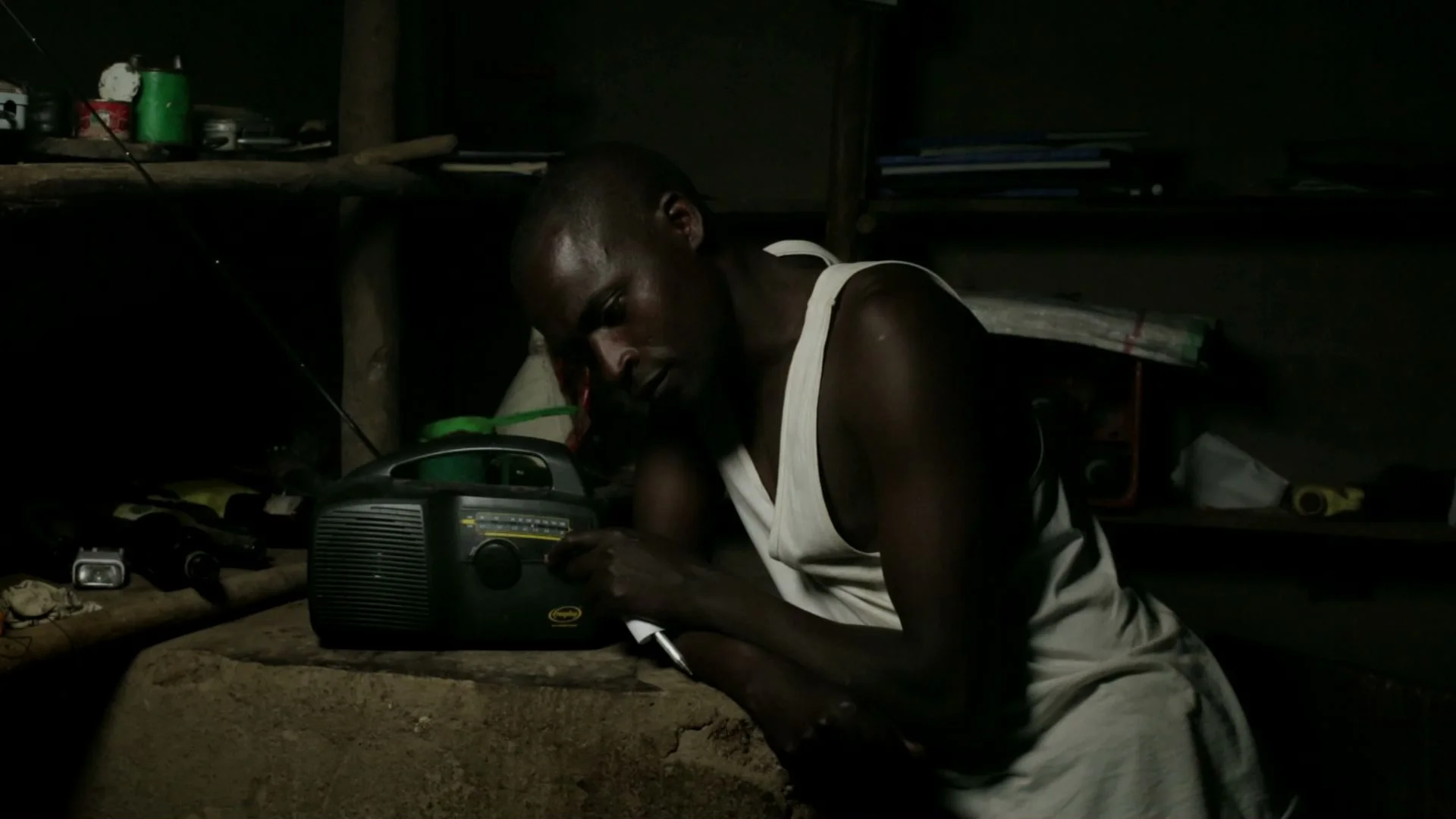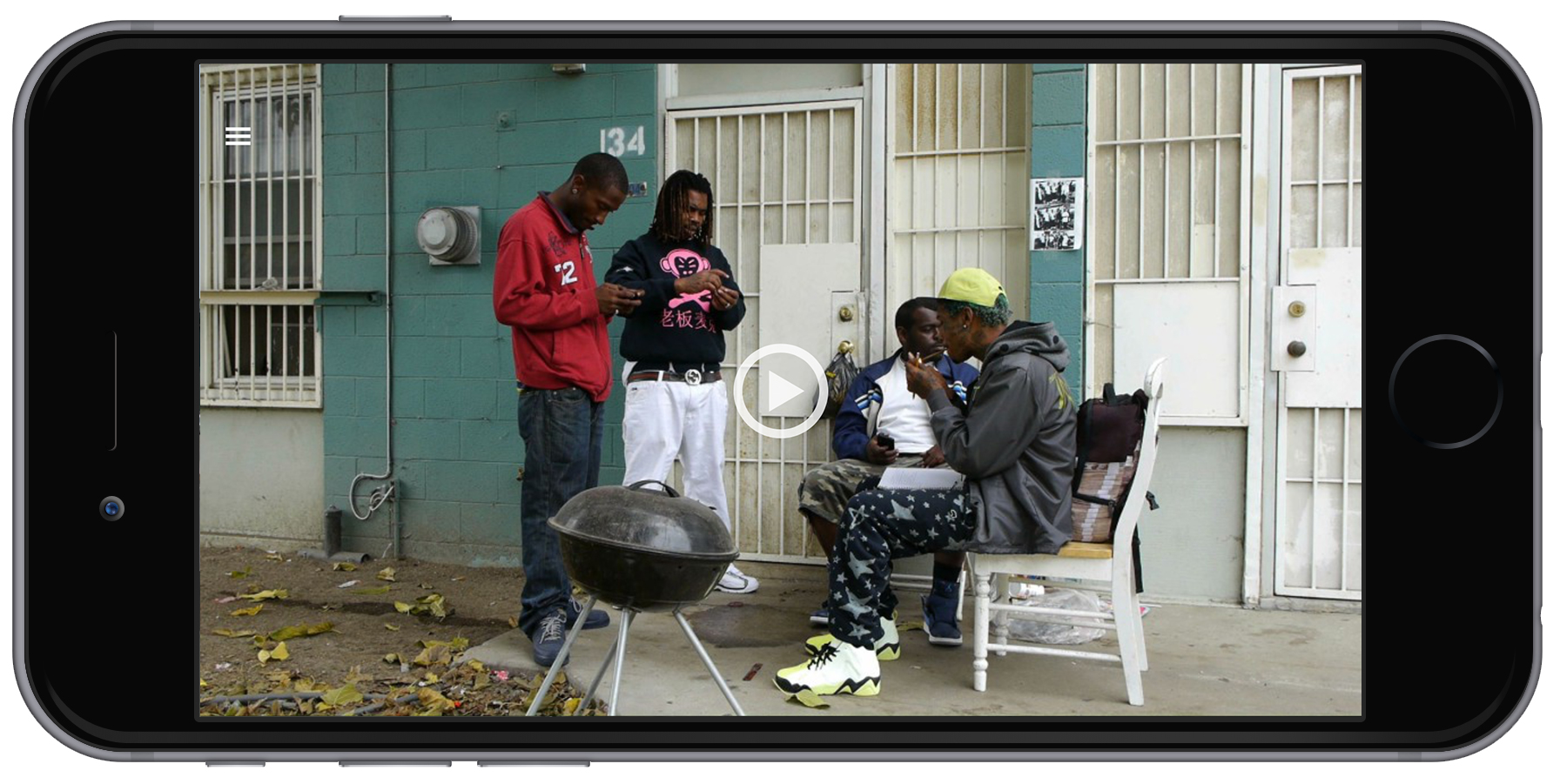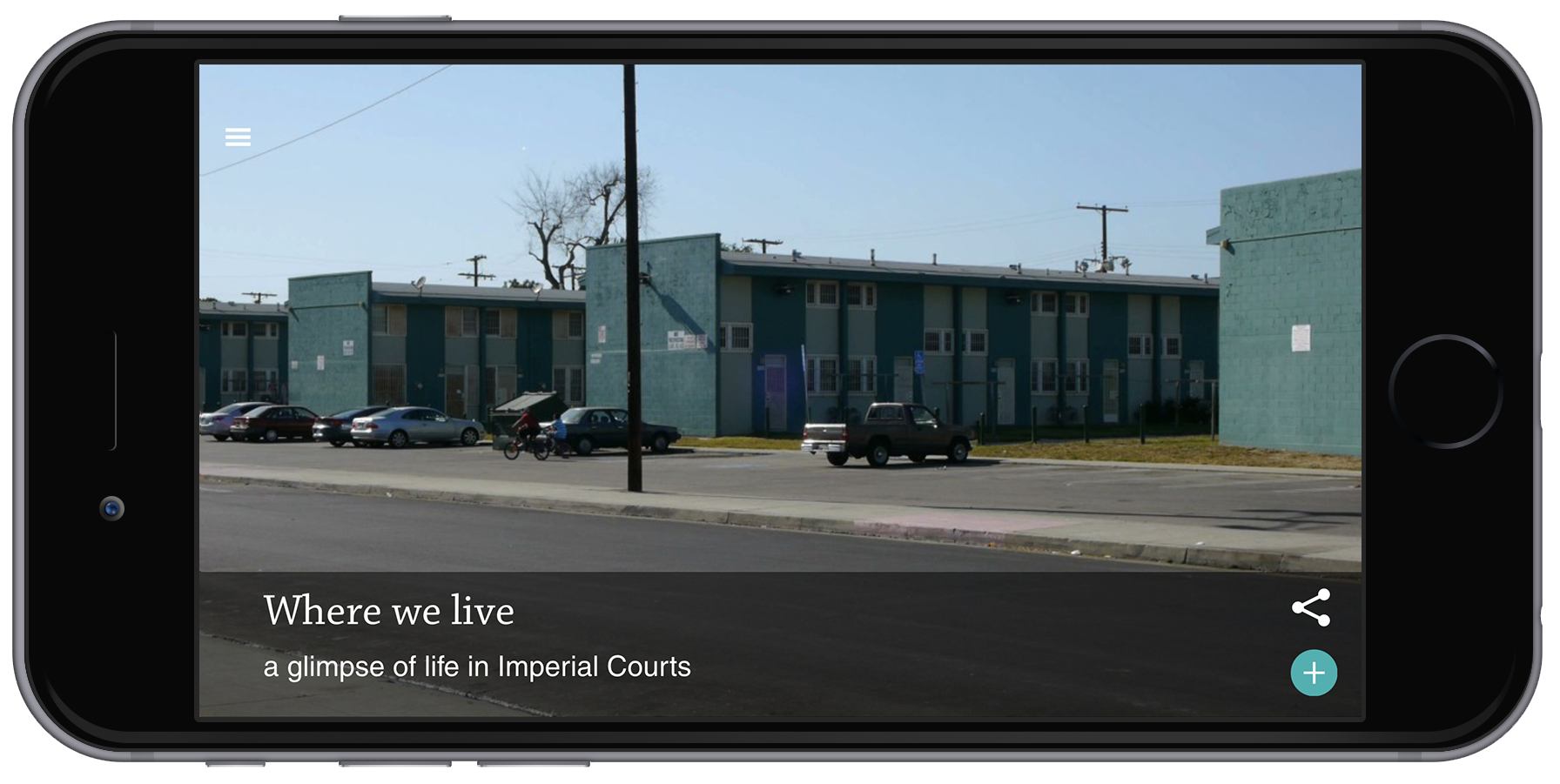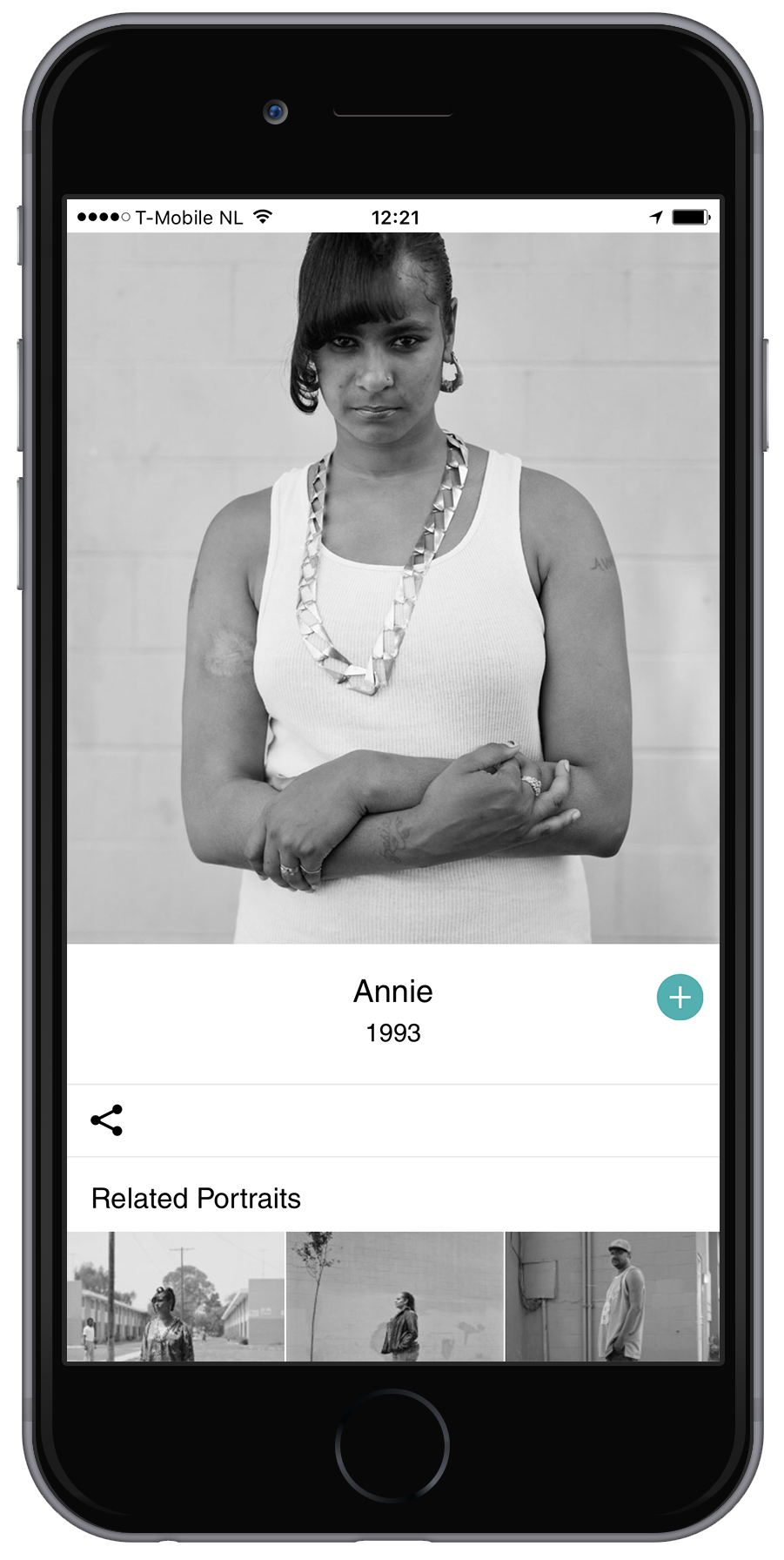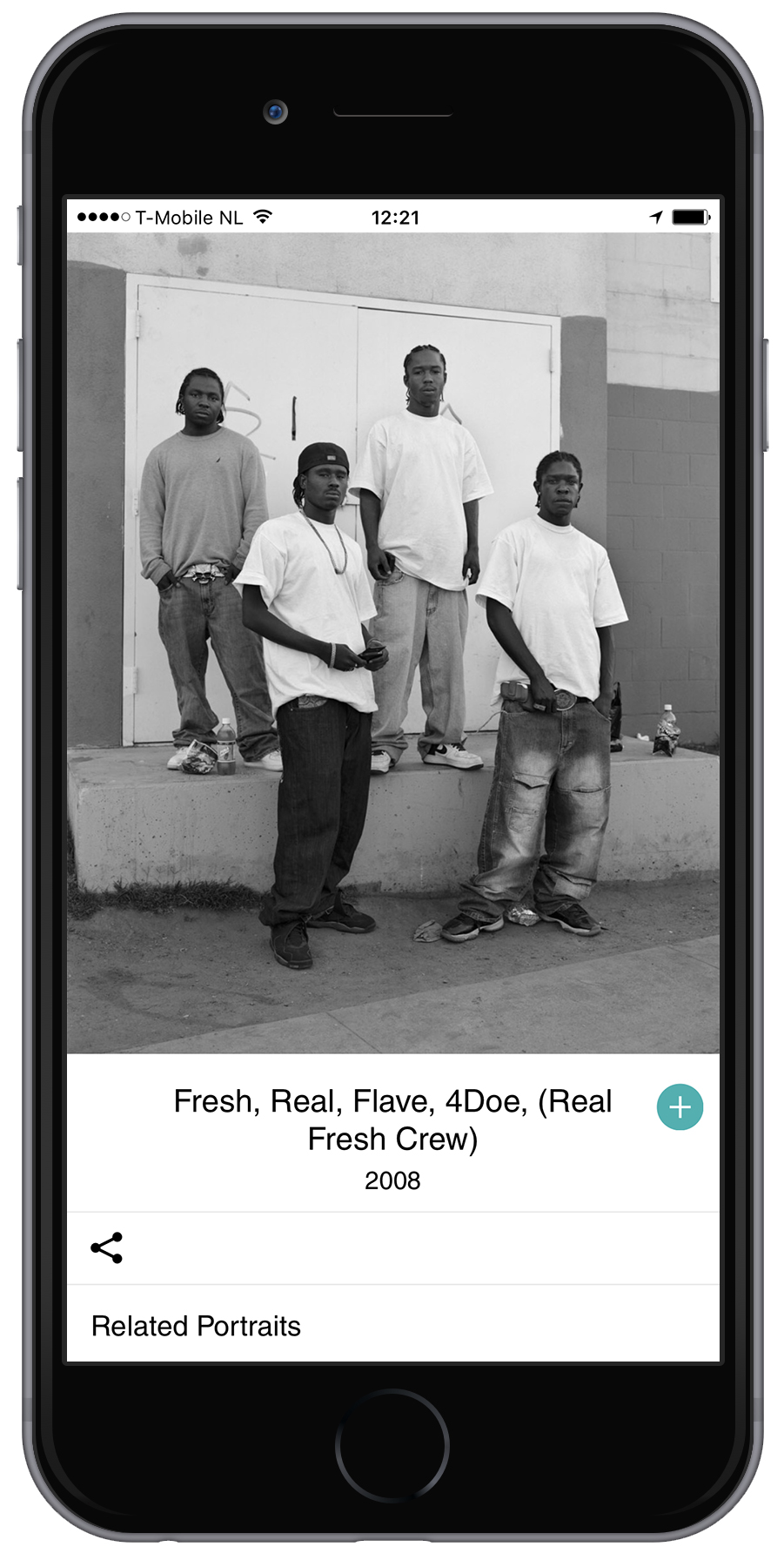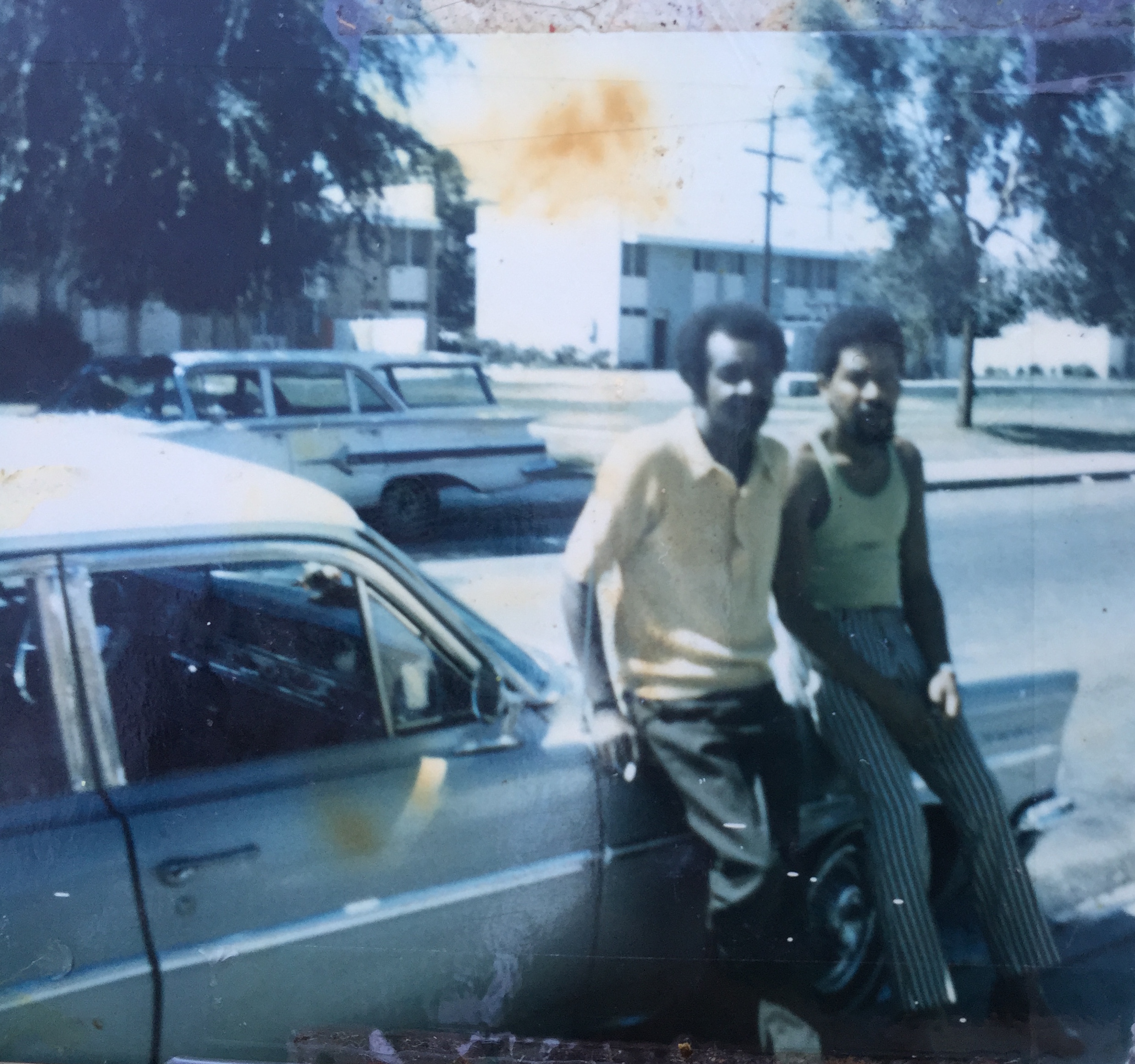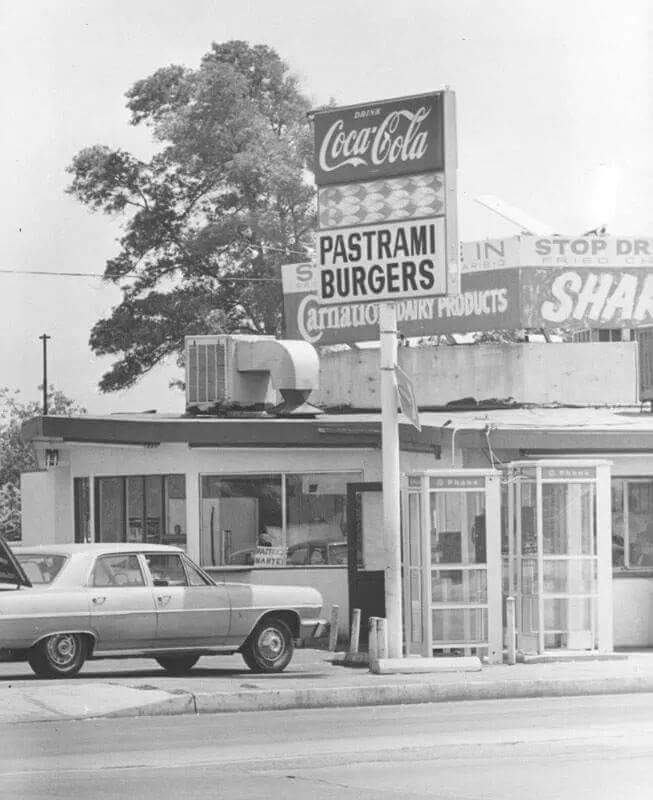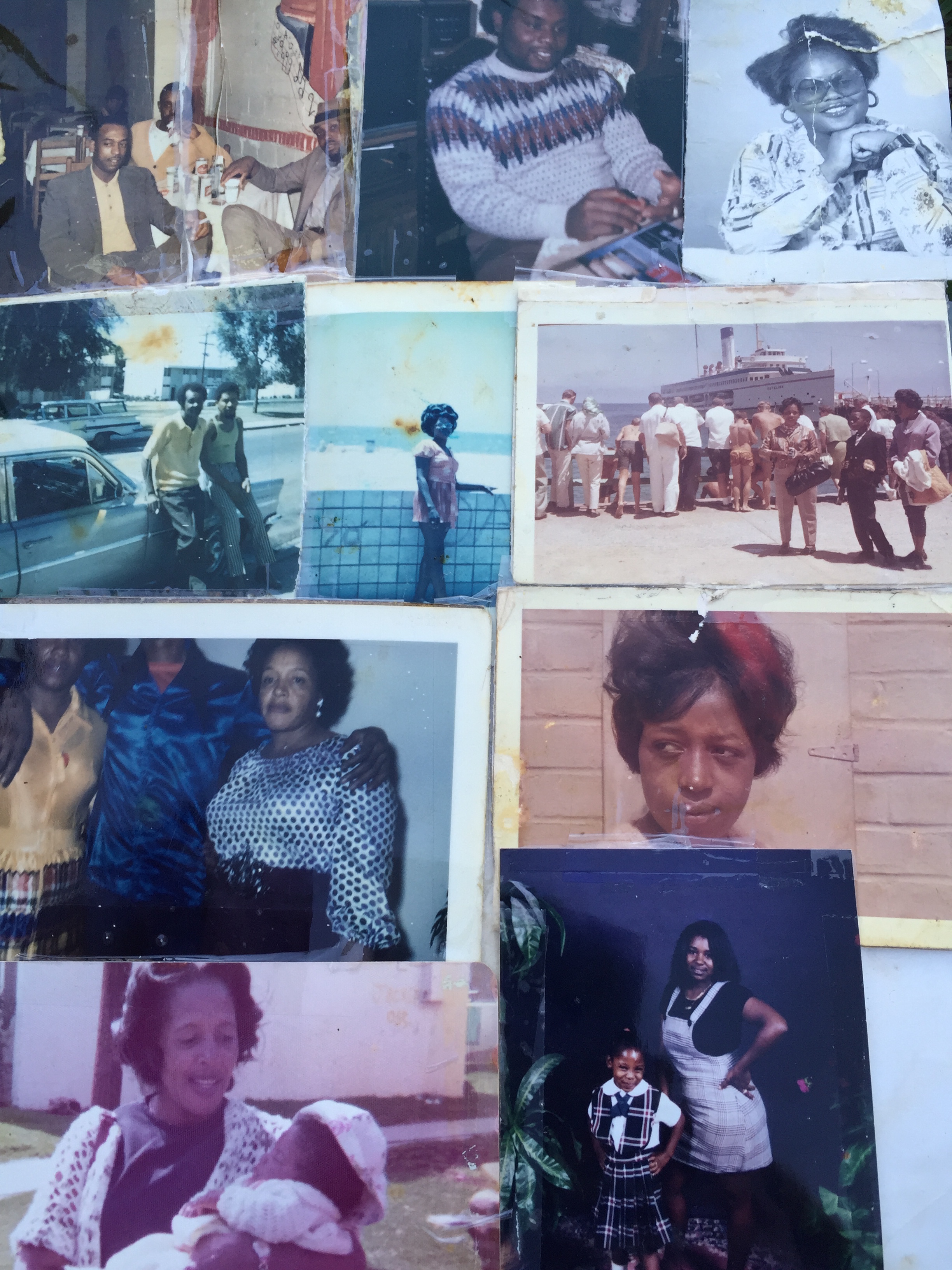Web documentary
How do people live in Imperial Courts?
Imperial Courts is a multimedia project by photographer Dana Lixenberg about Imperial Courts, a social housing project in Watts, Los Angeles. The work spans a period of more than 20 years: from the first images taken in 1993 to the follow-up she made between 2008 and 2015. Using photography, video and audio, Lixenberg gives an intimate glimpse of the daily life of the neighbourhood and its residents. The project comprises a book, exhibition and web documentary.
“You want to put some niggas on display?”
BACKGROUND
Imperial Courts was built in 1944 on the corner of 116th Street and Imperial Highway in Watts, Los Angeles. Part of a major social housing development, it attracted predominantly African-American migrants from the southern states. Imperial Courts and the neighbourhoods around it soon became a ghetto, beyond which African-Americans were not welcome. Frustration at the racial discrimination, job loss and social isolation boiled over into the notorious Watts riots of 1965. Widespread rioting erupted again in 1992, following the acquittal of four white LAPD officers accused of the brutal beating of Rodney King. Meanwhile, the streets were the bloody battleground of the war between the Crips and Bloods gangs, until they signed a truce in 1993.
“You want to put some niggas on display? Hahaha”,’ said Tony Bogard, leader of the PJ Watts Crips gang when he met Lixenberg for the first time in 1993. It was the height of the racial tensions in Los Angeles.
Besides the media, nobody ventured into South Central and certainly not ‘the projects’. Lixenberg was initially viewed with suspicion; the community was tired of the press attention and the negative media stereotyping. Lixenberg persisted and Bogard finally gave his approval for the project. In the period that followed, Lixenberg slowly won the trust of the residents of Imperial Courts, photographing them in black and white with a 4x5” camera. She stayed in touch with the community and returned to continue the series in 2008, revisiting Imperial Courts numerous times over the next seven years. She also began incorporating audio and video into her work.
“I’m from a place, where death is right around the corner. Get caught in the wrong spot, they put the wrong charge on ya. A gun and a white Tee, is an everyday thing.”
WEB DOCUMENTARY
Lixenberg’s work from the past 22 years forms the basis of the web documentary Imperial Courts, which she made in collaboration with documentary maker Eefje Blankevoort and interactive designer Sara Kolster.
The web documentary gives a broad audience an intimate look at an often misrepresented neighbourhood. The carefully constructed narrative in audio, text, video and photography takes the viewer beyond the media stereotypes and presents another, more nuanced picture.
The web documentary consists of three parts: the chapters Portraits and Stories, and contributions by Imperial Courts residents.
In Portraits, viewers are introduced to all the residents whom Lixenberg photographed between 1993 and 2015. As the images pass on the screen so do the years and we see the same people getting older, becoming parents or grandparents. A few lifelines stop abruptly.
Stories combines audio, video and texts to tell short stories about life in Imperial Courts.
Using Lixenberg’s work as a starting point, residents can comment on existing photos and videos as well as add their own material. Thanks to their contributions, Imperial Courts is a growing online historiography of which the residents are both protagonists and co-authors.
The result is a keenly observed and multifaceted portrayal of a close-knit community which, despite the adversity it has to overcome, is impressively resilient.
EXHIBITION
The multimedia exhibition Imperial Courts 1993-2015 was on show from 12 December 2015-6 March 2016 in Huis Marseille in Amsterdam.
BOOK
The book, also titled Imperial Courts 1993-2015, is published by Roma Publications and has been shortlisted for the Photobook of the Year 2015, awarded by Paris Photo and Aperture Foundation.
FESTIVALS & AWARDS
Premiere: 19 November 2015, IDFA DocLab
Dutch Directors Guild Interactive Award 2016

